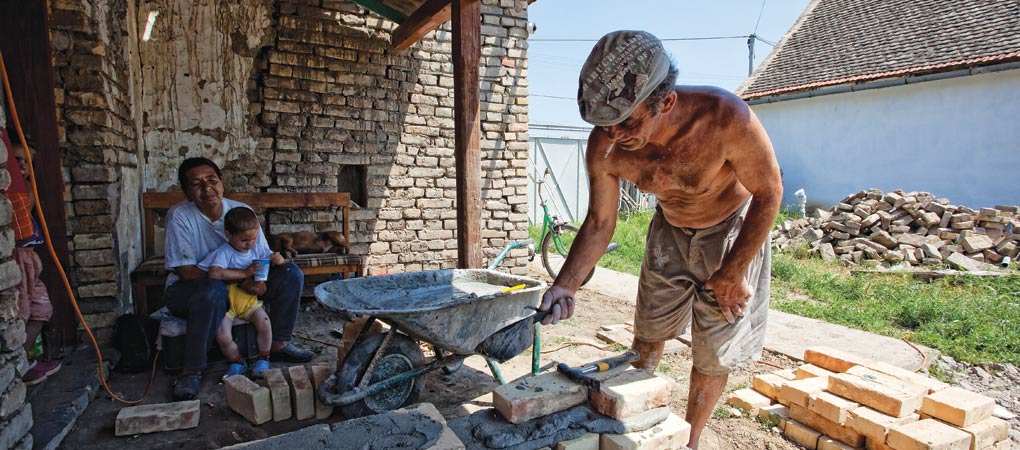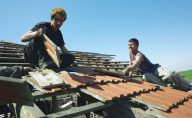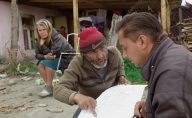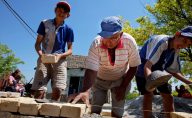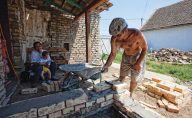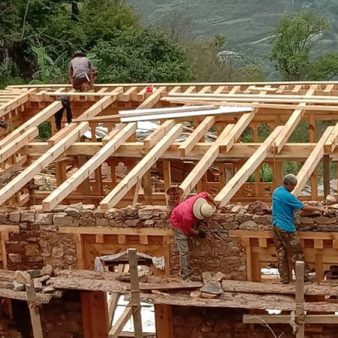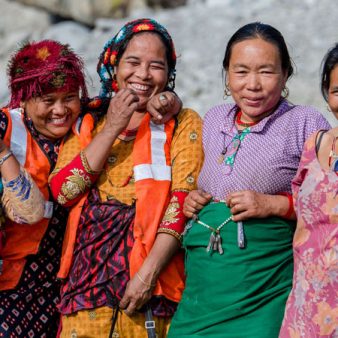The Roma are among the most vulnerable communities in Europe with a long history of persecution and discrimination perpetrated against them. Most live in segregated areas in poor quality and unhealthy housing. The project seeks to improve housing conditions and better integrate Roma people within wider society, including lobbying for equal access to public services. It has upgraded houses, improved sanitation, helped to improve school attendance, learning and helped people into work. The project’s ‘Dweller-driven Upgrading of Roma Settlements Model’ is now being successfully scaled up across Serbia.
Project Description
What are its aims and objectives?
The project aims to provide better living conditions for Roma People and help the Roma community better integrate with society. It aims to do this by:
- Helping Roma people to improve and upgrade their homes and sanitation system.
- Help more Roma children into mainstream education.
- Improve employment rates amongst Roma people enabling them to earn a good level of income.
- Advocating on behalf of Roma people to help them get equal access to public services.
During 2008-2012, the project successfully developed, tested and implemented a programme of improving the housing and living conditions of 3000 Roma living in 13 settlements. In addition, training support was provided to 630 Roma children. The current phase of this project aims to consolidate, scale up and institutionalise the approaches developed so far.
What context does it operate in?
Serbia has one of the largest Roma populations in Europe, estimated to be around 500,000. The government lacks the capacity and resources to develop Roma settlements. The Roma community is rarely involved in decisions about their settlements and housing. Roma people are among the most vulnerable communities in Europe, with a long history of persecution and discrimination. The Roma communities are also amongst the most deprived and socially excluded in Europe. In Serbia about 60 per cent of the Roma population is considered very poor, an estimated 60 per cent live below the poverty line of $2 per person a day. Twenty-six per cent of Roma children are regularly confronted with malnutrition, while only 46 per cent of them have a proper meal every day. Only 11 per cent of Roma settlements are considered developed, while most settlements are considered informal or illegal. Most Roma live in substandard houses without access to sanitation and with limited access to public infrastructure. Forty-five per cent of Roma settlements are located on land that is unsafe, risky and considered illegal. As compared to the general population, Roma people have a lower rate of joining and/or completing school education or getting employment.
What are its key features?
The project addresses the complex issues the Roma community face in a holistic way through partnerships between the Roma community, state institutions and municipalities. This compares to other previous approaches that have concentrated largely on providing housing. The project assists people in making decisions about upgrading their settlements through a ‘dweller driven approach’. The project places a high priority on owner occupation. This helps create an incentive for occupiers to improve and upgrade their own homes. Labour and recycled materials are contributed by the families and the project invests on average Euro 2,150 per house for new materials. In addition, the project has raised money to pay for upgrading of sanitation and infrastructure in Roma settlements. The project also helps Roma families introduce their children to mainstream schools. The project has provided mentoring support to 300 Roma pupils, through supporting the work of 14 teaching assistants. Roma children in other schools have been granted vouchers to purchase necessary school equipment and school uniforms. The project helps people seek new employment and helps develop their skills. The service is provided in partnership with the National Employment Service. This service has been used by 80 people. In addition, 1,050 Roma returnees to Serbia have used the services of the legal and migration counselling centre.
How is it funded?
The project is largely funded by the donations from the Swiss Church Aid (HEKS-EPER) and Swiss Agency for Development and Cooperation (SDC). Between 2008 and 2012, EHO and its partners invested approximately Euro 2.4 million in improving the living conditions of Roma in settlements out of which, Euro 1.21 million came from the SDC, HEKS and Swiss Federal Office for Migrations, while Euro 0.76 million was invested by Norwegian Church Aid and the Ministry of Foreign Affairs of Norway. Local municipalities invested Euro 0.38 million, while Euro 0.76 million was invested as in-kind contribution by Roma families themselves. Advocacy and lobbying with the municipalities have resulted in in-kind contribution and co-funding of Euro 82,870 and another Euro 95,000 is budgeted for 2014. While a number of national government departments are supporting the project and promoting this as a best practice in the Serbia, thus contributing in kind.
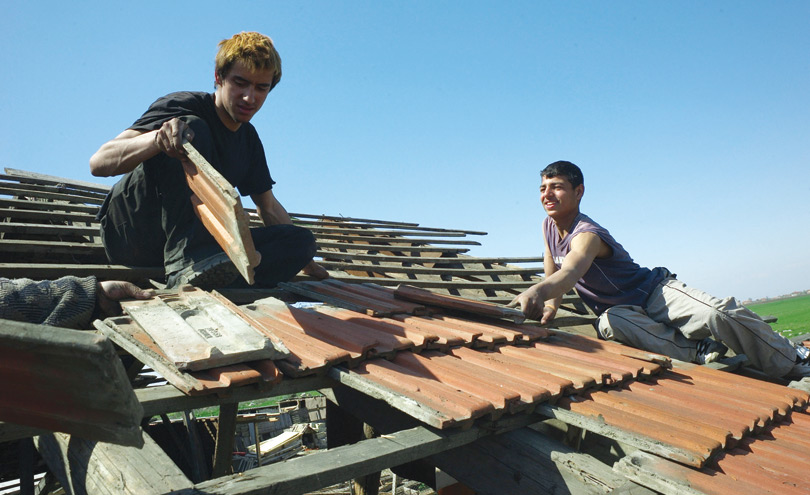

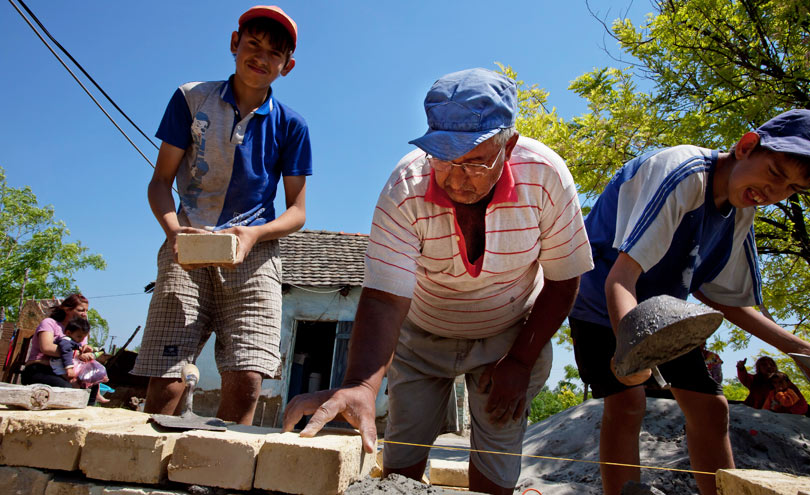
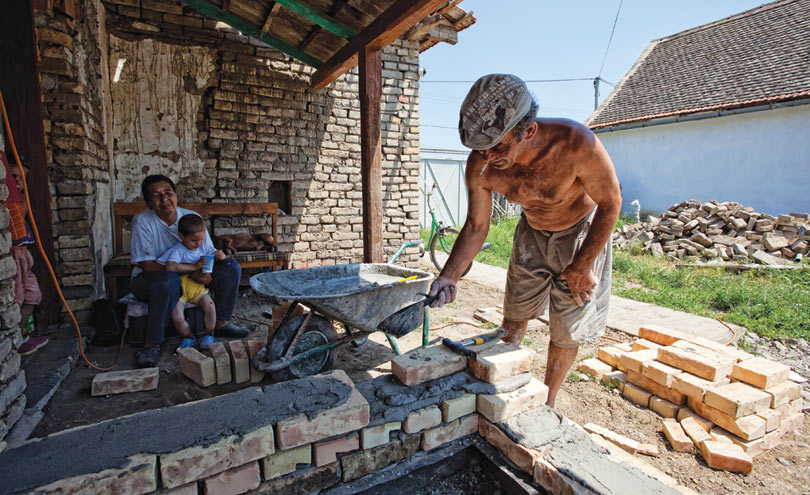
What impact has it had?
The project has had a significant impact on Roma population. During the period 2008-12, the project improved the living conditions of 3000 Roma, living in 13 settlements. This project has successfully tested the ‘dweller-driven upgrading’ approach, which was validated by an independent evaluation completed in 2011. During this period, educational support was provided to 630 children, on the job training was provided to 240 Roma and 186 people received legal advice and counselling services. The 2013-15 phase of the project is currently scaling-up the approach in nine municipalities, with an estimated 19,000 Roma benefiting. The housing conditions of 540 people have already been improved. They have better access to water, sanitation and electricity. The mentoring service in schools has continued and provided support to 300 Roma pupils, which has significantly increased attendance rates. Seven hundred pupils have received vouchers to purchase school items. One thousand and fifty Roma have received legal and migration counselling services to assist them with resettlement. Eighty people have benefited from the services to access employment or start to earn an income. The project offers a model to municipalities on how to upgrade Roma settlements and to promote their inclusion in the society.
Why is it innovative?
The partnership between the municipalities and the Roma communities with a common goal is perhaps the most innovative element of this project. As compared to a project that just delivers physical housing run by the government or an NGO, this project combines the relative strengths of the institutions involved. It also places a high priority on beneficiary ownership and improves their existing structure and fully utilises their skills and knowledge. It does not just focus on housing needs but also strengthens the economy of the Roma population and supports the education of their children. This contributes to their overall wellbeing.
What is the environmental impact?
The manual produced by the project encourages the use of recycled bricks, roof tiles and timber.
The project significantly improves the water and sanitation systems, creating a healthier water supply for people and reducing the pollution of water courses. There are a number of positive impacts on the local environment, especially as the Roma settlements are upgraded.
Is it financially sustainable?
The project is funded by grants from international donors and church-based organisations. The project has used the funds to build capacity and lobby for more resources from the government. There is evidence that in future the project will continue to receive government funds, local funds and community contributions.
The project has been successful in helping the Roma community access employment and acquires new skills. The project also uses the labour of the Roma and assists in the education of Roma children. This has resulted in pupils staying at school and improving education levels.
What is the social impact?
The project helps support the integration of Roma people into society. It also facilitates the mutual support and cooperation among Roma community. The project helps develop people with courses, business plan training and basic equipment, which help them to seek employment. However, employment levels remain low, partly as a result of the poor labour market in the country. The project also provides basic building skills training through a manual and on the job training. The project also inspired significantly increased school attendance amongst Roma children. The project has significantly improved housing and access to basic services, such as water and sanitation. Both settlements and housing have improved, resulting in health improvement. Health and safety improvements are not generally measured through the project monitoring. The project has succeeded to a large degree by enhancing employment and self-employment opportunities. It has achieved this by advising Roma returnees, host communities and local authorities and institutions on matters relating to Roma rights, migration issues, legal subjectivity and personal documentation, etc. It has also supported communities in building sanitation facilities and upgrading their housing.
Barriers
The project has identified four challenges and measures were put in place to overcome those:
- Beneficiary selection was a challenge at the inception of the project. It is now done with local government representatives and shared with the community. For added participation, Roma Settlement Development Boards are established by the municipality.
- Active cooperation of the municipality was a challenge at the beginning. Now, local government is involved in all aspects of the project to avoid the risk of lack of cooperation and to enhance the sustainability. Similarly at the inception, the Roma community was also not sure of the benefits of the project.
- The evaluation carried out in 2011 also identified the challenges of finding employment for the Roma community. Skills, training and ‘know how’ is not enough to put them on the employment ladder.
Lessons Learned
The project brings together the strengths of various partners: the donors, municipalities, government departments and the Roma community itself. It involves the Roma community, both in making choices and involvement in planning and designing and works with clearly defined and systematic procedures. It works with a group, who have been treated as the passive beneficiaries in the past. The project has promoted an approach through which owners take the lead on identifying and working on the need to upgrade housing and settlements. This guarantees ownership of the work and its sustainability. Additional support to the participants, in terms of residence registration, schooling, finding employment and income are considered as integral parts of the upgrading process.
Evaluation
Since 2013 the project has undertaken systematic monitoring and evaluation based on the baselines and indicators. An external evaluation was carried out in 2011 and another evaluation is planned for autumn 2015. Monitoring is also carried out of the activities and expenditure. The project submission also includes an independent auditor’s report for the period ending 2013.
Transfer
The project continued from 2008 to date. It carried out an evaluation in 2011 and the current phase finishes in 2015. The trust in the approach of stakeholders, especially the donors, municipality, the government and the Roma has increased with time. The current phase of the project is the scaling up and mainstreaming phase. The EHO is making every effort to scale-up the project and help others to learn from this project. They are also making efforts to share the learning across other countries, where the Roma population is facing similar challenges.
The project has been transferred to a number of municipal corporations within the Vojvodina region.
Elements of the project have been transferred around Serbia. A separate project was established in Belgrade and central Serbia, and a decentralised project has been established in South Serbia. The project has been shared internationally and visited by a number of groups. EHO’s settlement upgrading programme was included in UN-Habitat’s Handbook of sustainable housing practices in 2012. In 2011, it was also presented at the First Housing Forum, in Budapest, Hungary. Its work has also been highlighted in the Organisation of Security and Cooperation (OSCE) in Europe’s report on housing legalisation.
Elements of the project have been incorporated by Kosovo-based NGO Voice of Roma.

